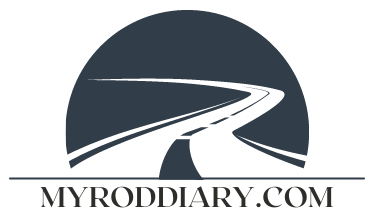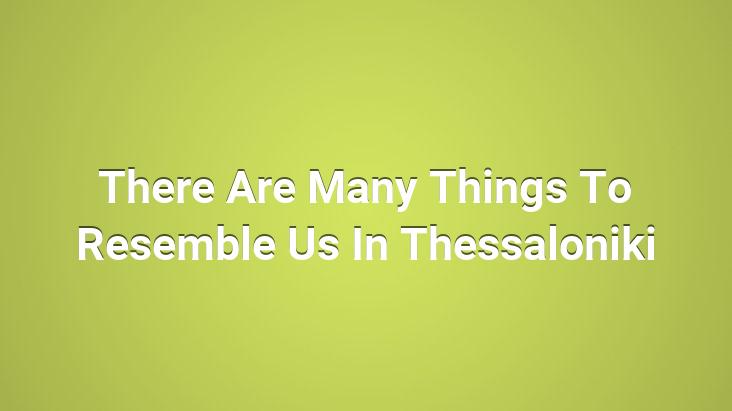As Turkish people, we make our art of analogy speak wherever we go.. We establish a close relationship with a small detail on the table we sit on, a tree leaf or an ordinary household item, and we bring it to life by matching it with a piece of ourselves.. We either go back to the past, or we try to make ourselves feel closer by connecting with the day we live in.
This emotional movement, which is made for the purpose of self-improvement and bringing it closer to one’s own order, emerges even more during international travels.. Every point of a city visited is likened to a part of the place we came from, and it is equipped with expressions of surprise and smile, and suddenly it becomes one of us…
Thessaloniki is a city that gives a lot of material to all these analogy arts.. In addition to being the city where Atatürk was born, it is also the hometown of Nazım Hikmet.
A copy of İzmir with its coastline and its location to the sea, the city that was the second largest city of the Ottoman Empire after Istanbul in the Ottoman Period. Today, the Greek capital, Athens, is the second largest in Greece, and the largest in Greek Macedonia…
Transportation is very easy
It is very difficult to reach in the minds of most of us. It can be reached in 50 minutes by plane from Istanbul, 6 hours by private car, and 12 hours by train.. Thessaloniki, which can reach many destinations in Turkey in a shorter time, makes you feel just like in Turkey.. It creates emotional weight especially for those coming from the Aegean, Izmir, the population exchange, or those who have ties to Greece in the past…
It has been recorded as the birthplace of many historical names in its historical journey that goes back to Alexander the Great and his father, King Filip. past Thessaloniki. Names such as Salih Omurtak, Refet Bele, Afet Inan, Ahmet Emin Yalman were also born in Thessaloniki.
After coming under the domination of the Ottoman Empire, Thessaloniki (Thessaloniki) turned into one of the most important centers where innovations of the period took place.
As it is known, the Young Turk movement that led the Ottomans to collapse is based in Thessaloniki.
Although we resemble each other so much and note numerous similarities when we go out and walk on the streets, we have been far from each other since the first years of the Republic. It is necessary to think that it is time to get closer to the Greeks.
Because two brotherly societies, sharing the same lands but different in language and religion, should be able to realize their unifying similarities through mutual visits, forgetting the days when they moved away from each other in the shadow of politics.
Parking shortage
In 2014, I am once again on my way to the house where Atatürk was born, which I visited in 2007 with a feeling of great excitement.. This time, the only difference is that I came with my family.
When we leave the hotel near Thessaloniki Airport to take a city tour of Thessaloniki, we mark the Atatürk House on the map of the phone and set off.
After a half-hour journey. We pass by the Thessaloniki Olympic Stadium and in front of the house located in the garden of the building used as the Consulate General of the Republic of Turkey today.. While we are looking for a place to park our car due to the shortage of parking spaces, we are ashamed of ourselves when we see a busload of police standing guard in front of our consulate. It reminds us once again of the primitiveness of people who make concessions to provocative actions despite all these years.
After parking our car in one of the side streets in Thessaloniki, which has a serious parking problem, our walking marathon begins this time.. While we are walking through the side streets with our backpacks on our backs, we continue to smile at the old uncles sitting in rows at the local coffee houses. First we visit.
Rotunda
Taking its name from its architectural shape, the Rotunda is located in a very popular touristic location at the intersection of Dimitriou Gounari and Filippou streets.. Construction M.S.. He was one of the four great leaders of the Roman Empire and its leader in the Balkans around 300 BC.. The building, which is stated to have been built by Caesar Galerious, who chose Thessaloniki as the settlement at the end of the century, was also used as a cemetery and a religious center. converted into a Christian church dedicated to the Archangels. Necessary additions were made to suit the needs of the new religion.. A new rectangular annex was built on the east side for the liturgy, a new entrance on the west side, and two small churches on the south side.
From 1523 to 1591 the Rotunda was used as the cathedral of Thessaloniki.. After the Ottoman conquest of the city in 1591, it was converted into a Muslim mosque and a minaret was added.. The building, which became a “Macedonian Museum” with the decree of Eleutherious Venizelous in 1917, has been used as a gallery and museum since those years.
As we understand from the information in the building, which has a guest book at the door, many Turkish tourists visit the Rotunda while they are here. Despite the hot weather outside, the Rotunda, with its cool and mystical air, has not compromised its unifying status despite all the changes it has gone through over the years. we are coming across. Smiling at the policemen standing in front of it, we move towards the back part of the building, which is the museum entrance.
Atatürk House and Museum
We are used to seeing from school books. When we realize that famous pink oriel house on a side street, we suddenly go back to the past…
When you look at the people resting in the cafes on the street and the Turks trying to view the house from all over the street, one gets different emotions.. After a few photos, we head towards the entrance gate to enter the house where Mustafa Kemal Atatürk, the founder of the Republic of Turkey, was born. been the scene of change. First of all, the security measures at the entrance of the consulate have been significantly increased.. The microphone officer behind the bulletproof glass security booth, which we are used to seeing in the consulates of Western countries, greets the guests as warmly, sincerely and politely as possible. We write it in the notebook.
The museum, which was entered from the front door of the consulate before the restoration, was taken to the back door and turned into a safer and controlled state.. The crowd of children and people running inside both surprises us and makes us happy that people’s interest in Atatürk does not diminish.
After climbing the steps of the house one by one, read the informative boards about the history of Thessaloniki and the Ottoman Empire. we find ourselves in the room where he was born. An emotional breakdown occurs in each of us when we see the soft music inside and the statue with the exact silicone body form of Atatürk. .
The toys and photos of Atatürk taken with children in the Atatürk and children-themed section on the ground floor get full marks from us.. We need such initiatives to connect museums that have been kept away from people for years, intangible and feared that no sound can be made, to connect with people. It has been renovated with the sponsorship of its President, Serdar Bilgili.
Atatürk House Museum, which is visited with great enthusiasm by every Turk who comes to Thessaloniki, is on the tour route not only of Turks but also of all tourists who cross the road to Thessaloniki.

